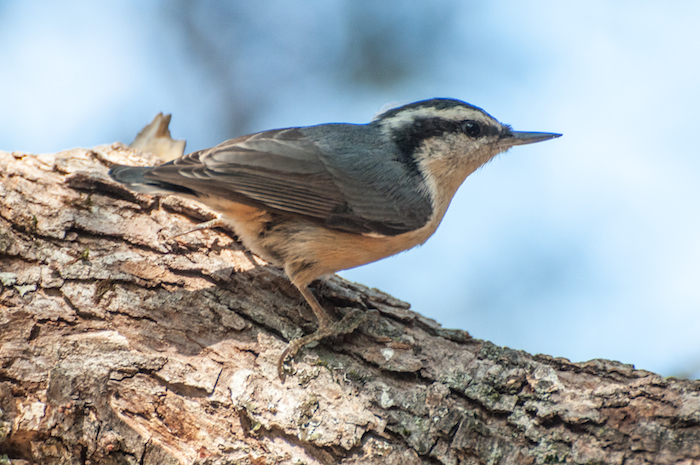
Red-breasted Nuthatch
If you have entered the world of the conifers above the Central Valley, or throughout most of North America for that matter, you stand a good chance of having heard an ongoing, nasal ankh, ankh, ankh, ankh. It is the song of the red-breasted nuthatches, elfin birds of our pines and firs.
They are harder to see than hear; they don’t seem shy, but they are small, and much of their living happens far over our heads. Nuthatches are built for prying insects from the bark of trees. Their bill is slightly dished up and stout enough to shovel bugs from crevice hide-aways. Their shoulders are broad, relatively speaking, and provide the heft to wield their strong bills. Their long hind toe is used, uniquely in the bird world, to hold them in place while they hunt face-down on a tree trunk or branch. Their tails are stiff, allowing them to prop against a tree as they pound against it.
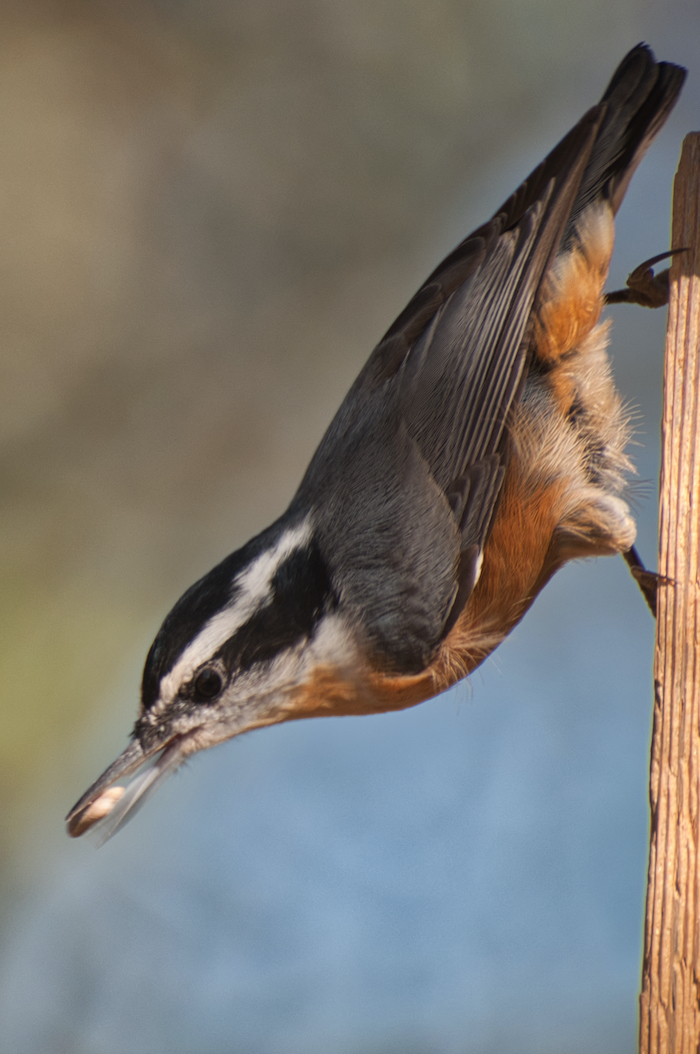
And what do they pound? In addition to picking insects from cracks in tree trunks, these nuthatches gather seeds from cones at branch-tips. They often wedge hard pine-nuts into crannies in the bark and then crack them open with hammer blows from their bills. Also, these versatile gymnasts, like woodpeckers, carve out their own cavities for nesting. No fools, they prefer the softer wood of dead limbs and snags for their home-building.
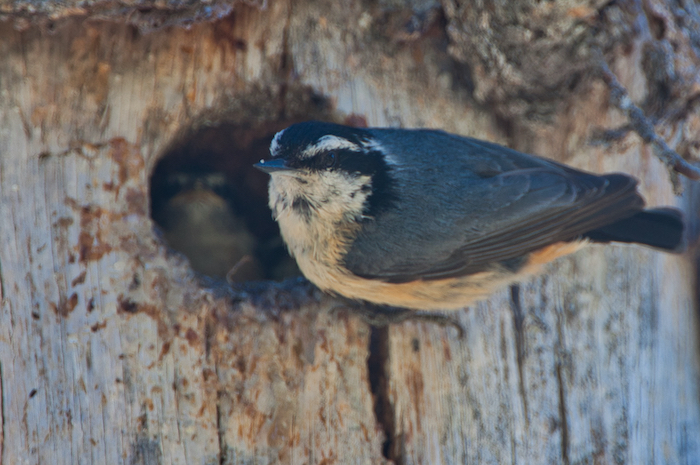
Males often begin several nesting holes as part of their courting. A female takes over and shapes the chosen cavity to her liking, taking about two weeks to complete the excavation. Both adults apply sap to the hole entrance–he on the exterior, she on the interior. The tiny nuthatches dive right through the hole without getting gummed up, but predators, from owls to ants, can be deterred by the sticky goo.
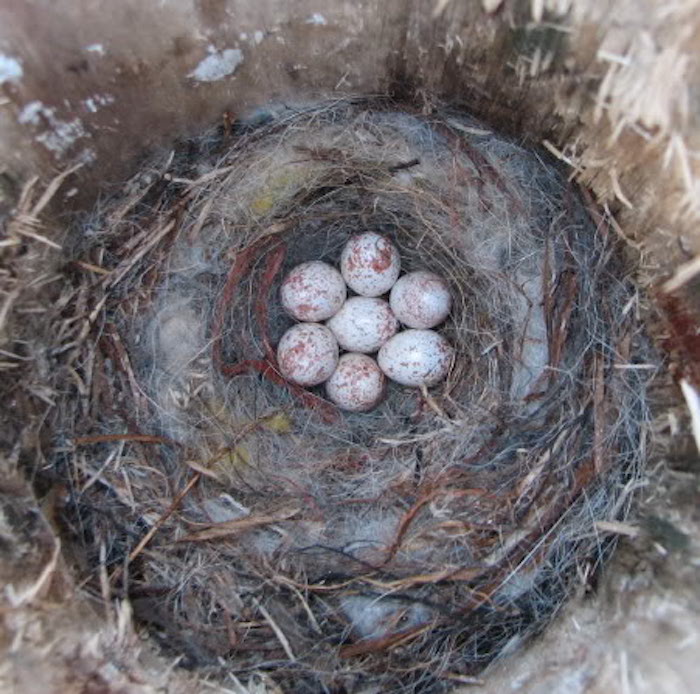
He begins feeding the female, and she lays a handful of eggs in their nest. The young hatch, naked and blind, after two weeks of incubation. Another two weeks and, having been fed and protected by both parents, the young fledge into the world.
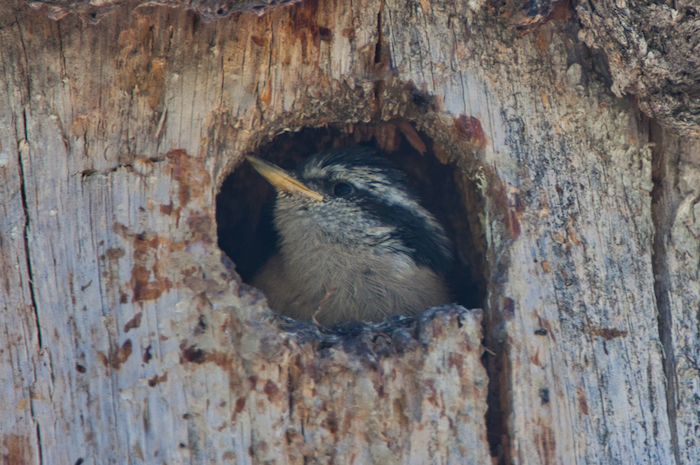
There, if you enter that world of the conifers, you may be able to see them. A little luck and a decent pair of binoculars will let you enjoy the red-breasted nuthatch’s gray-blue back, chestnut underside, and black eyeline under a white eyebrow. Otherwise, at least you may enjoy their ubiquitous song–ankh, ankh, ankh…

Another great article from Dan Greaney! Thanks Dan!